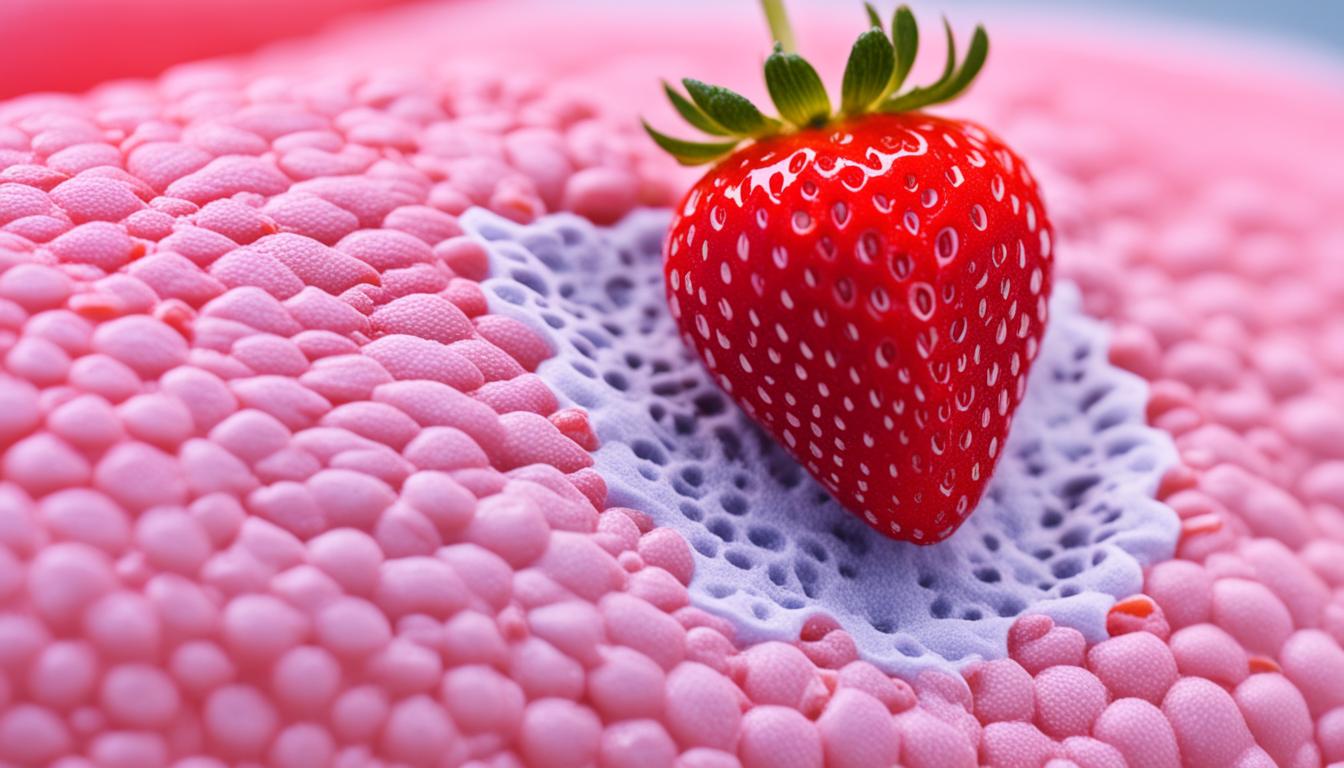Strawberry hemangiomas, or infantile hemangiomas, are common tumors in infancy. They result from too many endothelial cells, forming blood vessel clumps under the skin. These growths look like bright red patches with a bumpy feel, often called “strawberry marks.”
While we’re not sure what causes them, some think things like lack of oxygen, issues with the placenta, and how blood vessels form could be involved. Strawberry hemangiomas show up more often in babies of Caucasians and are usually seen more in girls.
Usually, strawberry hemangiomas go away on their own before a child turns 10. But, some might need help to fade, like with stem cell therapy.
Key Takeaways
- Strawberry hemangiomas are common in babies and are usually harmless.
- They look like bright red marks that might feel bumpy.
- Doctors aren’t sure what exactly causes them, but there are some ideas.
- They often appear in Caucasian babies and are seen more in girls.
- Most go away by themselves, but some might need special treatments like stem cell therapy.
Types and Characteristics of Strawberry Hemangiomas
Strawberry hemangiomas come in different shapes and sizes, which means there are various types. Knowing these types helps doctors give the right diagnosis and treatment. The main kinds are:
Superficial Hemangioma
The most seen strawberry hemangioma type is superficial. It looks like a red, rough patch, much like a strawberry mark.
Deep Hemangioma
Deep hemangiomas look blue or like a bruise. They’re usually found when the area swells at 2 to 4 months old.
Combination Hemangioma
Some lesions are both deep and visible on the skin. These mix features of both superficial and deep types.
Multiple Hemangiomas
Kids might get many strawberry hemangiomas. If they have five or more, their organs could be at risk. The liver is often affected.
PHACE Syndrome
PHACE syndrome involves a large hemangioma and other issues. It can cause brain, heart, artery, and eye problems.
Airway Hemangiomas
Hemangiomas in the throat can be dangerous. They might block the airway, making it hard to breathe. Fast medical help is needed.
It’s key to know about the different types of strawberry hemangiomas. This knowledge helps in identifying and treating them right.
Diagnosis and Treatment of Strawberry Hemangiomas
Doctors usually find strawberry hemangiomas by how they look. A skin biopsy might be done if the case is unusual. This test checks a small piece of the skin under a microscope.
Most strawberry hemangiomas go away on their own. But, some need treatment if they grow fast. Doctors often give oral propranolol or prednisone. These help shrink the blood vessels inside the hemangioma.
For small ones, doctors can use topical timolol. This medicine stops them from getting bigger and can make them shrink. Sometimes, surgery is needed to take them out if they cause problems.
Pulsed dye laser is a treatment for the blood vessels left behind. It uses a special laser to fade the redness over time.
Imaging tests like ultrasonography or CT scans can show how deep the hemangioma is. They can help doctors figure out the best way to treat it.
Good diagnosis and treatment are key for dealing with strawberry hemangiomas. They help avoid problems and give the best result.
Conclusion
Strawberry hemangiomas often clear up completely by age 5. But some may not fully disappear, leaving behind extra skin or telangiectasias. The size and location of the hemangioma can cause complications, though.
Ulceration is a frequent issue, especially in certain areas like the lower lip or neck. These can lead to problems with the eyes, block airways, make feeding hard, or cause cosmetic issues. Some cases link strawberry hemangiomas with PHACE syndrome and extra health problems.
Despite these issues, most complications can be managed with good care. It’s very important for those with strawberry hemangiomas to get the right medical help. Working with healthcare experts can help these individuals lead rich, full lives.

